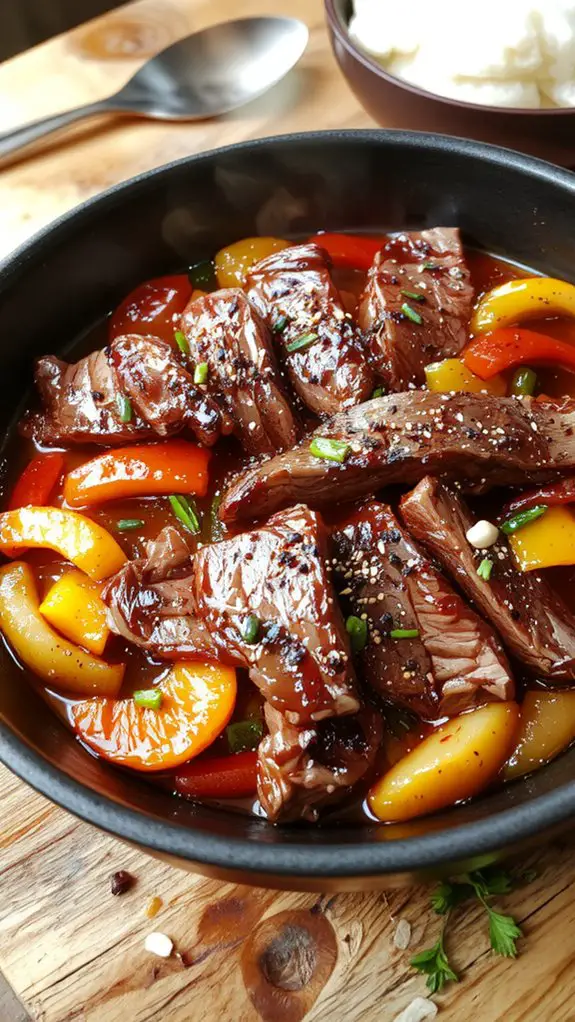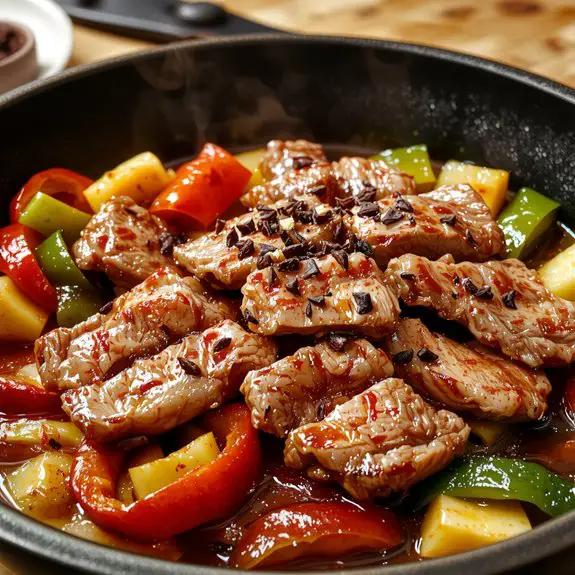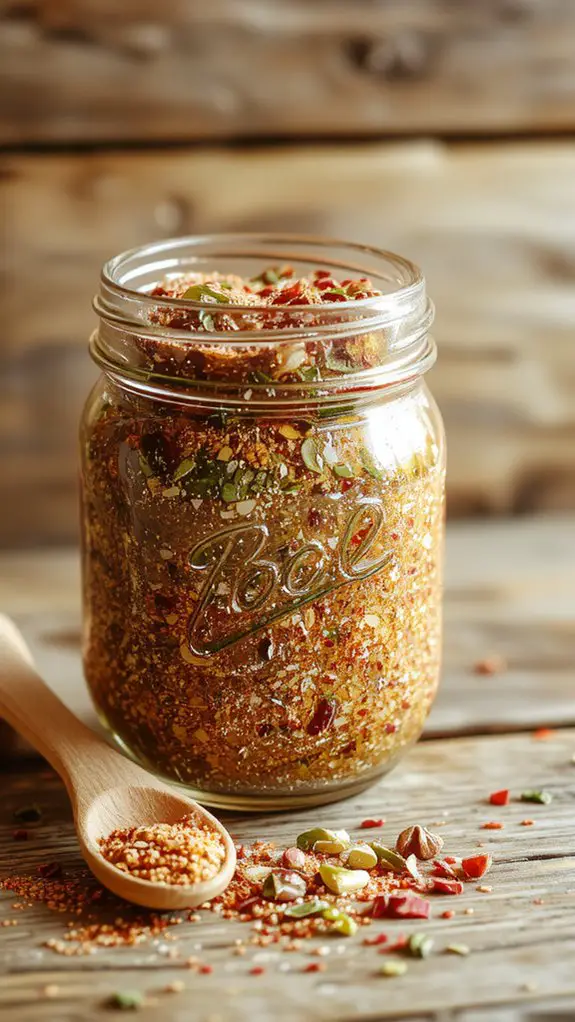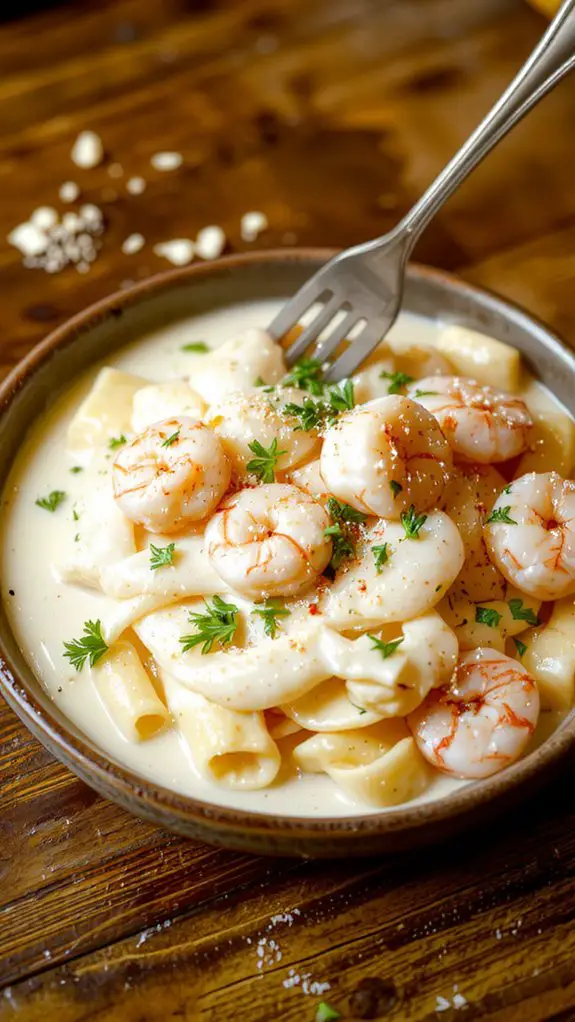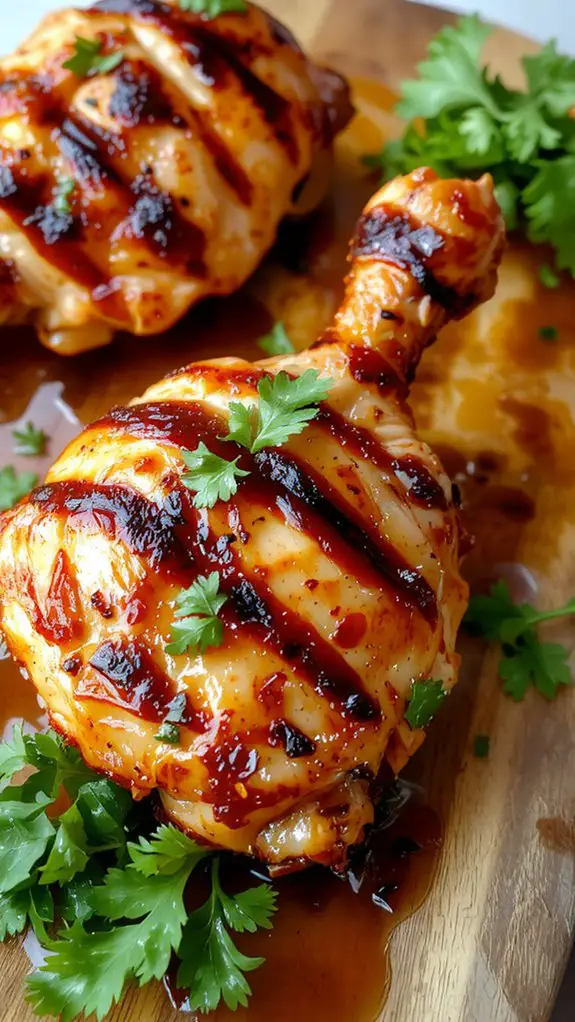Recipe
This homemade pepper steak recipe is the kind of dish that’ll have everyone at the table begging for seconds. It’s a guaranteed crowd-pleaser, and I’ll let you in on a little secret: the key is that perfect sear on the steak and the savory, slightly spicy sauce that clings to every bite.
We’re talking tender slices of beef, crisp bell peppers, and just the right amount of garlic and soy sauce to create a flavor explosion. I’ve made this countless times—it’s my go-to for impressing guests or just treating myself to something restaurant-worthy at home.
The best part? It’s surprisingly easy to pull off, even on a busy weeknight. Trust me, once you try this, it’ll become a staple in your kitchen.
Ready to jump in? Let’s cook up something amazing.
Ingredients
Pepper steak is all about balancing bold flavors with tender, juicy meat. Choosing the right ingredients is key to achieving that perfect mix of savory, sweet, and tangy. Here’s what you’ll need, along with insider tips to make your dish shine:
– Steak: Opt for flank steak or sirloin—they’re lean, tender, and slice beautifully.
Pro Tip: Cutting against the grain guarantees maximum tenderness.
- Bell Peppers: Use a mix of colors—red, green, and yellow—for sweetness and vibrancy.
- Onion: Yellow onions work best, offering a balance of sweetness and sharpness.
- Garlic: Fresh garlic cloves are a must—minced finely for even distribution of flavor.
- Soy Sauce: Low-sodium soy sauce is ideal to control the saltiness while keeping the umami.
- Oyster Sauce: Adds depth and richness; if unavailable, hoisin sauce makes a decent substitute.
- Cornstarch: Essential for thickening the sauce—don’t skip it!
- Sesame Oil: A drizzle at the end elevates the dish with its nutty aroma.
- Rice Wine Vinegar: Provides a tangy kick; apple cider vinegar can work in a pinch.
- Beef Broth: Use low-sodium for better control over seasoning.
- Fresh Ginger: Grate it finely—it’s non-negotiable for that zesty, warming note.
Little Wins: Garnish with sesame seeds or green onions for a polished finish.
How to Make the Best Pepper Steak Cooking Method
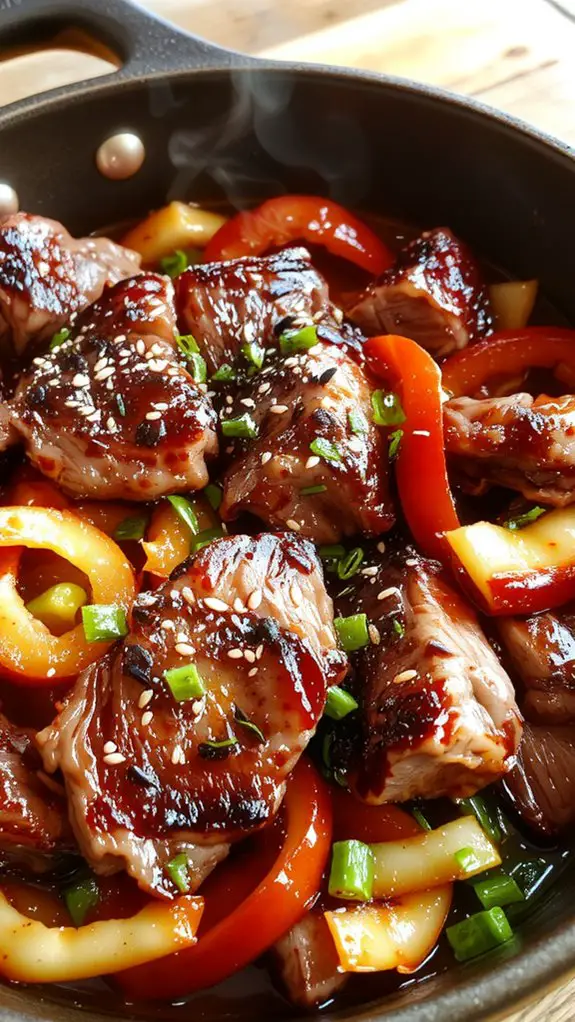
– Prepare your ingredients beforehand: Slice your steak into thin strips and have your bell peppers and onions sliced as well. Having everything ready to go guarantees a smoother cooking process and prevents overcooking any ingredient.
Pro tip: Let the steak sit at room temperature for about 15 minutes before cooking—it helps it cook more evenly.
– Season the steak: Generously Season the steak strips with salt and black pepper. Toss them well to guarantee even coating.
Watch out: Avoid over-seasoning, as the soy sauce and other sauces will add saltiness later.
– Heat your pan or wok: Place it over medium-high heat and add a tablespoon of oil. The pan should be hot but not smoking before you add the steak.
Pro tip: Use a high-smoke-point oil like vegetable or avocado oil to avoid burning.
– Sear the steak: Add the steak strips to the hot pan in a single layer, working in batches if needed. Let them sear for 1-2 minutes per side without moving them too much—this creates a nice crust.
Why it matters: Searing locks in the juices and adds depth of flavor.
Watch out: Overcrowding the pan can cause the meat to steam instead of sear. Remove the steak once it’s browned but still slightly undercooked—it will finish cooking later.
– Cook the vegetables: In the same pan, add a bit more oil if needed, then toss in the bell peppers and onions. Stir-fry them for 3-4 minutes until they’re tender-crisp.
Pro tip: Add a pinch of salt to the veggies to bring out their natural sweetness.
- Combine everything: Return the steak to the pan with the vegetables. Add minced garlic and stir-fry for another minute to combine the flavors.
- Add the sauce: Pour in a mixture of soy sauce, oyster sauce, and a splash of water or broth. Stir everything together and let it simmer for 1-2 minutes until the sauce thickens slightly and coats the steak and veggies.
Why it matters: Simmering helps the flavors meld together.
Pro tip: Adjust the sauce to your taste—add a little sugar for sweetness or a splash of vinegar for tanginess.
– Finish with freshly cracked black pepper: Sprinkle a generous amount of black pepper over the dish just before serving for that signature pepper steak flavor.
Watch out: Adding the pepper at the end guarantees it stays aromatic and doesn’t lose its punch during cooking.
– Serve immediately: Plate the pepper steak over steamed rice or noodles for a complete meal.
Pro tip: Garnish with chopped green onions or sesame seeds for an extra touch of freshness and texture.
Nutrition
The following table provides the nutritional information per serving of the homemade pepper steak recipe.
| Nutrient | Amount per Serving |
|---|---|
| Calories | 320 kcal |
| Protein | 25 g |
| Carbohydrates | 12 g |
| Fat | 18 g |
| Saturated Fat | 6 g |
| Cholesterol | 70 mg |
| Sodium | 450 mg |
| Fiber | 2 g |
| Sugar | 5 g |
Chef Tips
Mastering this dish doesn’t just rely on ingredients—it’s about technique.
I always slice the steak thinly against the grain for tenderness. Use high heat to sear quickly, locking in juices.
Don’t overcrowd the pan; cook in batches if needed. Stir-fry veggies briefly to keep them crisp.
Finally, let the sauce thicken slightly before serving. It’s these details that elevate your pepper steak to restaurant quality.
Frequently Asked Questions
What Is the Origin of Pepper Steak?
Pepper steak’s origins trace back to Chinese-American cuisine, blending Cantonese flavors with Western techniques. I’d say it emerged in the U.S. during the mid-20th century, adapting traditional stir-fry methods to include beef and black pepper.
Can I Use a Different Cut of Beef?
I’d say you can use a different cut, but stick to tender ones like sirloin or ribeye if you want it juicy. Tougher cuts need longer cooking, so adjust your method to keep it from drying out.
Is Pepper Steak Gluten-Free?
It depends on the ingredients I use. If I stick to gluten-free soy sauce and avoid thickening the sauce with flour or cornstarch containing gluten, I can make my pepper steak gluten-free. I’d just double-check everything.
How Do I Store Leftover Pepper Steak?
I’d store leftover pepper steak in an airtight container in the fridge for up to 3 days. If I need it longer, I’ll freeze it for 2-3 months, reheating it gently to keep it tender.
Can I Make This Recipe in a Slow Cooker?
I can make this recipe in a slow cooker easily. I’ll just add the ingredients, set it on low for 6-8 hours or high for 3-4 hours, and let it cook until the meat’s tender and flavors meld perfectly.

